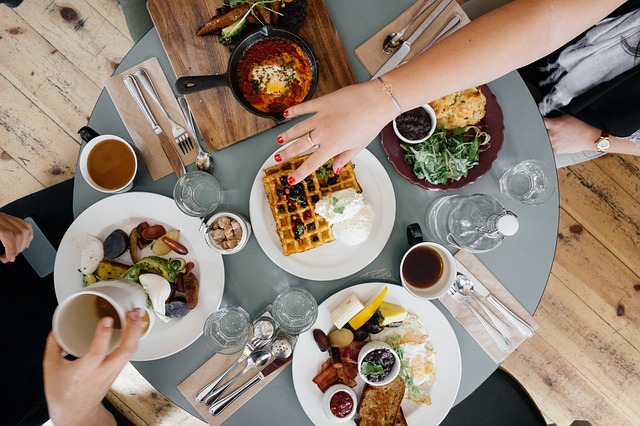This Content Is Only For Subscribers
The Restaurant Association has unveiled a comprehensive analysis of consumer spending and behaviour patterns in the dining and takeaway industry through its latest consumer research data. The report, based on an online survey of 4,000 customers, reveals intriguing insights into the evolving preferences of New Zealand diners.
Key Findings:
Increased Expenditure: On average diners claimed their weekly expenditure on dining has risen compared from 2022 with a new median spend of $114. While 56% of patrons maintained their spending levels over the past 12 months, 40% reduced their spending, mainly due to less frequent dining out and switching to more affordable options.
Regional spending varies significantly, with the highest in Auckland/Upper North Island and the lowest in Otago/Southland.
A quarter of respondents have increased their spending, with 38% of these people dining out more often.0nly 8% increased spend due to choosing more premium dining venues, possibly reflecting a group with greater disposable income or a preference for premium dining experiences. Those over 46 years old are more likely to spend more, however, those 30 years or younger dine out more often.
Culinary Preferences: Modern New Zealand cuisine emerges as the top cuisine choice, favoured by 32% of respondents, followed by Italian and Japanese cuisines. European and Thai cuisines also enjoy popularity, reflecting Aotearoa’s rich culinary landscape.
Dining Frequency: The majority dine out monthly or weekly, with a trend towards maintaining these habits. However, a clear inclination towards seeking deals and discounts suggests a focus on cost-saving measures. 45% of participants dine out once or twice a month, and 37% 1-3 times per week. A smaller fraction (3%) dine out over four times per week, while 15% eat out less than once a month. The data suggests that the majority of respondents anticipate their dining habits will remain about the same for the next 6 months, with over 50% across all categories not expecting any change.
Motivations: Quality of food and menu variety are top priorities for diners, with 94% listing the menu and quality of food served as the primary consideration when choosing somewhere to dine. Socialising, work events, and celebrating special occasions are also significant motivators.
Online Presence: A strong online presence is crucial, with Google being the primary digital resource for discovering new eateries. Online reviews, social media, and niche food platforms also play a key role.
Takeaway Trends: Website ordering is the preferred method for ordering takeaway, followed by direct phone calls and third-party apps. The most common frequency for ordering takeaway is once or twice per month, indicating a balance between convenience and occasional indulgence.
Dining trends: Respondents expressed a strong inclination towards food trends that prioritise sustainability and ethical sourcing. The standout preference, with the highest response rate at 72%, is a keen desire for seasonal produce, indicating a widespread appreciation for freshness and local sourcing. Following closely behind, 68% of respondents prioritise locally sourced ingredients. Ethical considerations also play a substantial role, as 34% of participants express a preference for ethically sourced items, including fair trade and free-range options. Additionally, there is a noteworthy interest in plant-based diets, with 19% of respondents emphasising the importance of vegetarian options. These trends collectively signify a consumer-driven shift towards sustainable, ethical, and health-conscious dining experiences, prompting businesses to adapt and align their offerings with these evolving preferences. 16% are looking for low or zero alcohol options.
Negative Experiences: Poor food quality and service issues are the top grievances, emphasising the critical role of maintaining high standards in all aspects of the dining experience. Reliable service and high-quality meals are crucial to customer satisfaction in the takeaway sector.
Knowledgeable staff and exceptional service are deemed crucial by nearly one-fifth (19%) of patrons. Cleanliness follows suit, ranked as the fourth-most important factor by 17% of respondents. Furthermore, 17% express a keen interest in an innovative menu, placing it second in their list of preferences. The ambience of an establishment holds significance for 18% of respondents, while the selection of drinks, though ranked ninth by 25%, proves to be a specific priority for certain customers. These insights shed light on the multifaceted considerations shaping the overall dining experience.
Restaurant Association ceo, Marisa Bidois says “Consumer dining preferences continue to evolve and it is crucial for restaurants to adapt to these changes,”
“The survey results provide invaluable insights into the dynamic landscape of consumer preferences, and as an industry, it’s imperative that we take heed of these trends to ensure continued relevance and success.
“While the rise in weekly expenditure signals a sustained interest in dining out, the prevalence of seeking deals underscores a heightened cost-consciousness among patrons.”
She says “The regional disparities in spending habits highlight the need for restaurants to stay agile. The survey underscores the importance of a robust online presence and tailoring takeaway offerings to strike a balance between convenience and occasional indulgence.”
“The survey results are a compass for the future of the restaurant industry. By understanding and responding to these preferences-be it in health consciousness, dining experience, or value for money-we can not only meet customer expectations but also position ourselves as leaders in a market that values innovation and responsiveness.”



